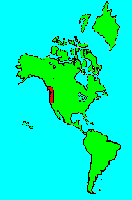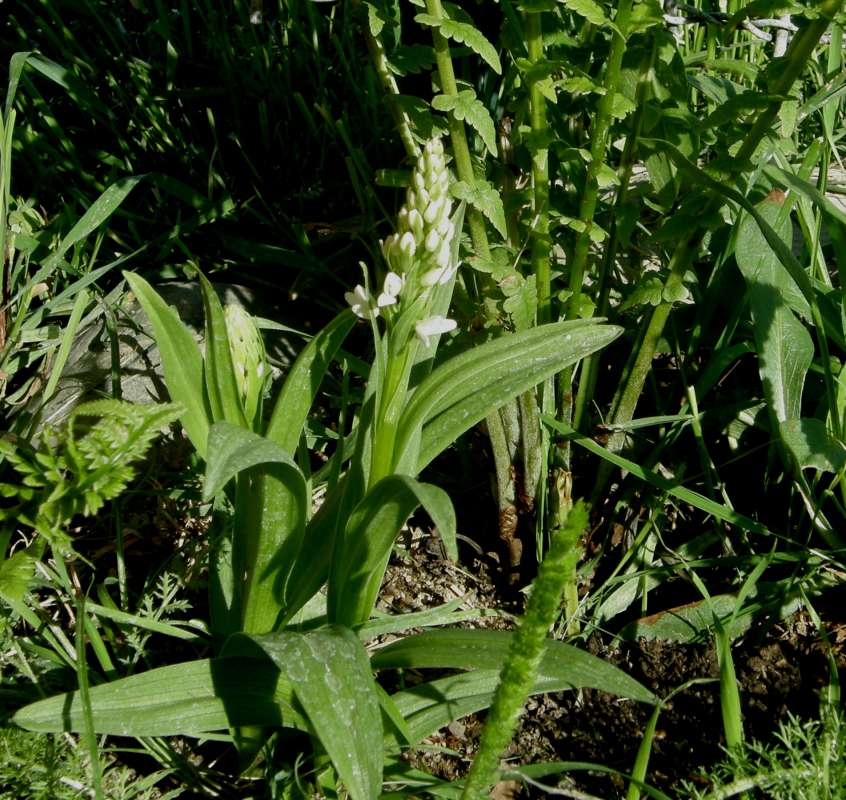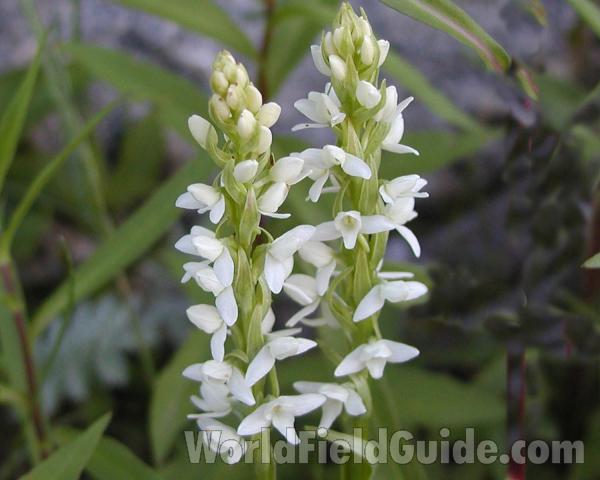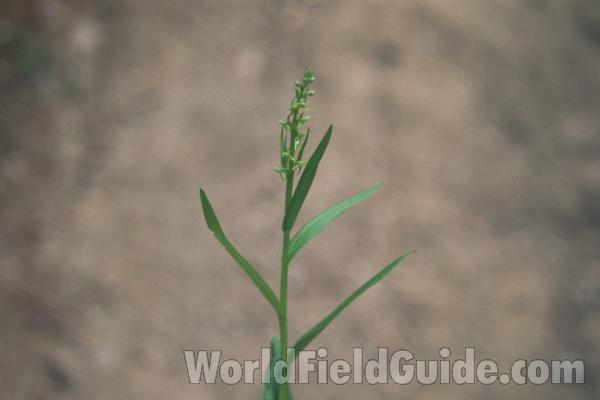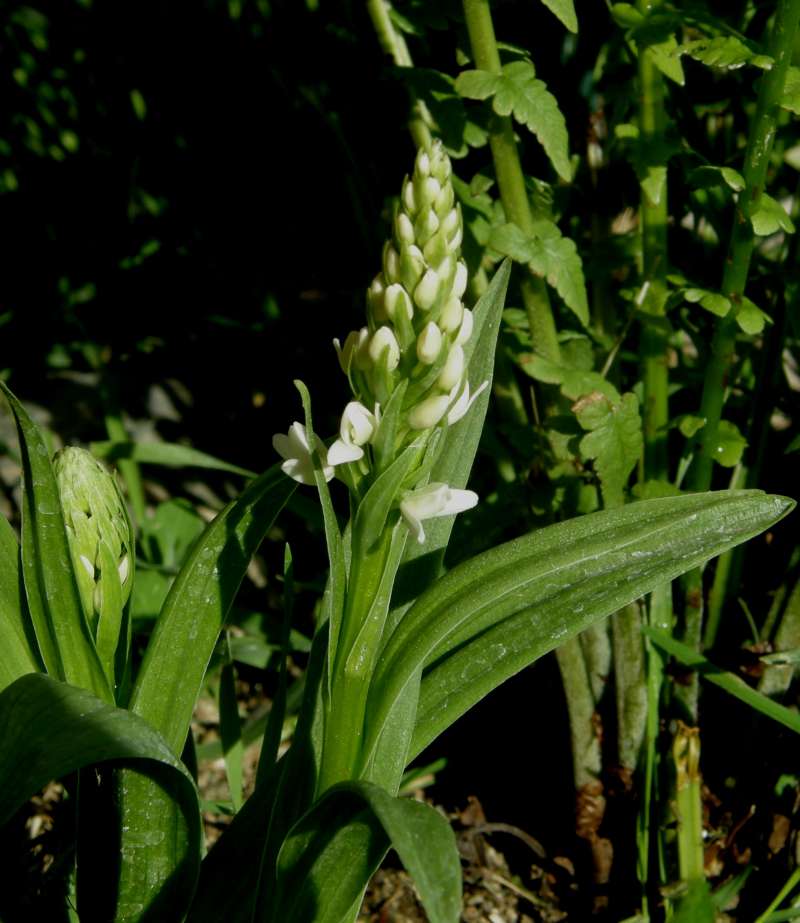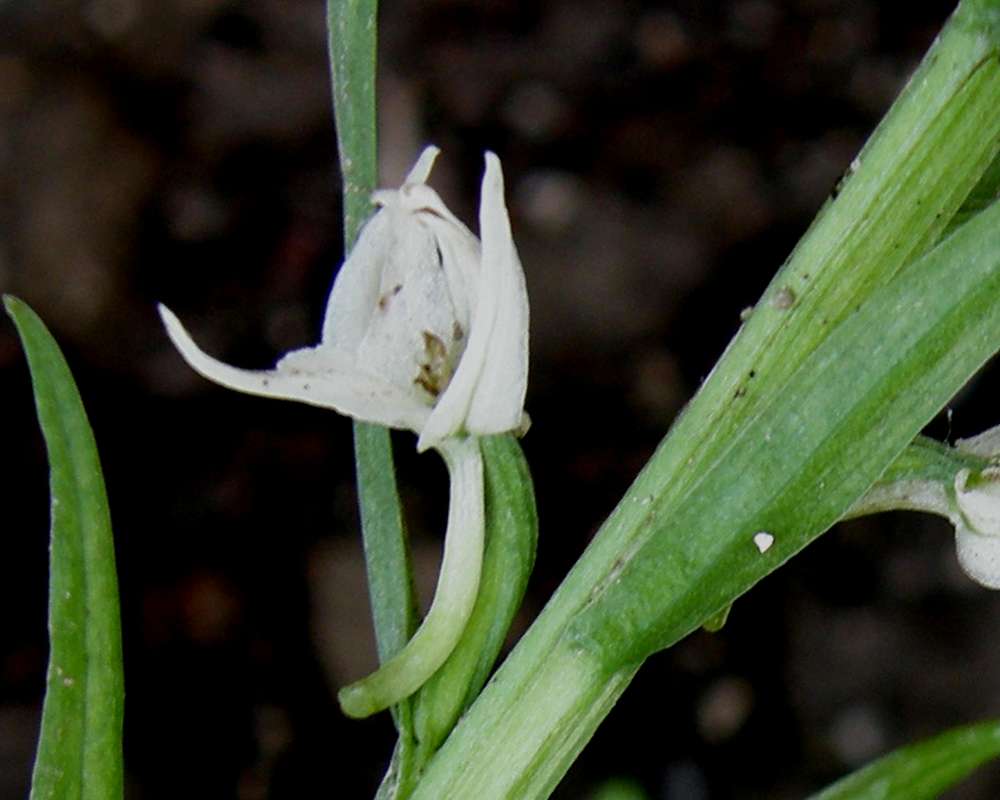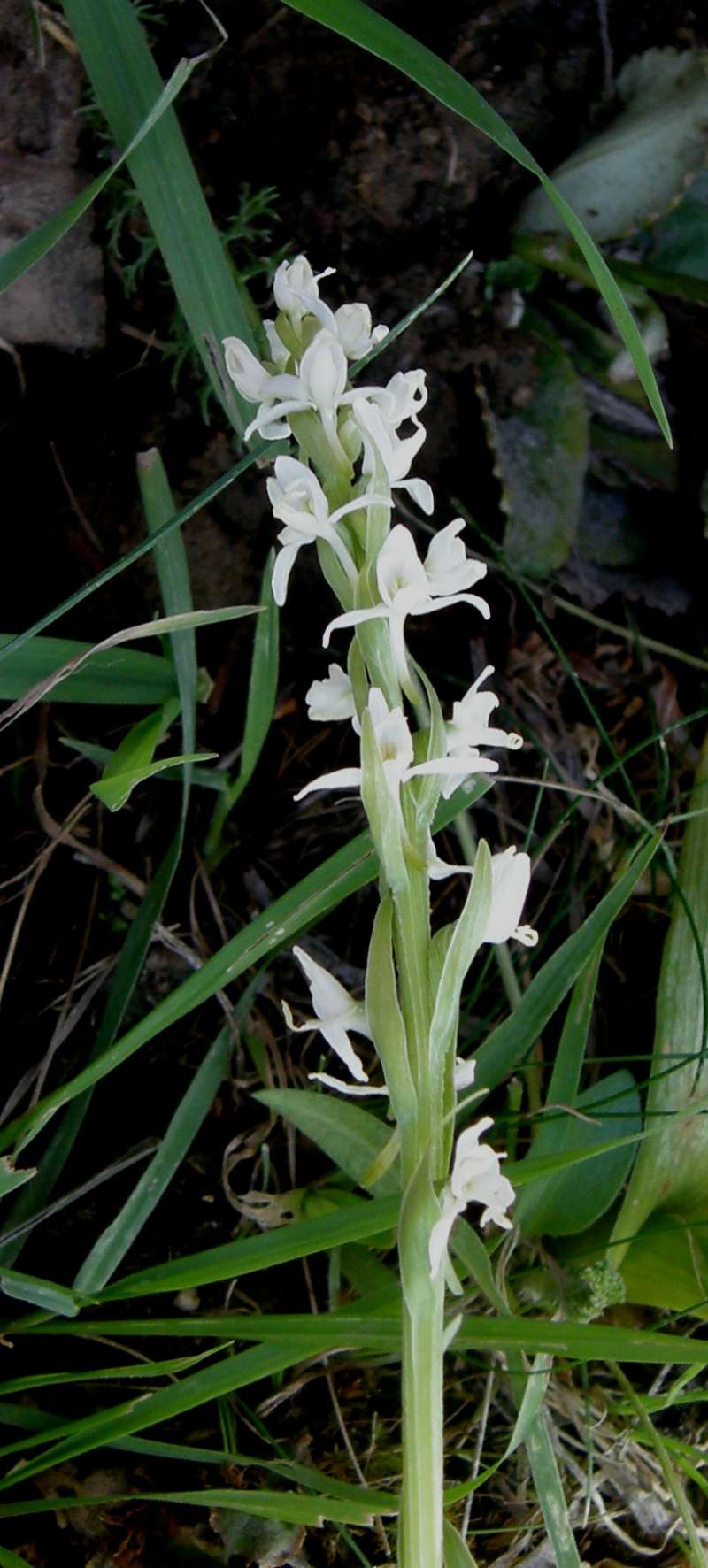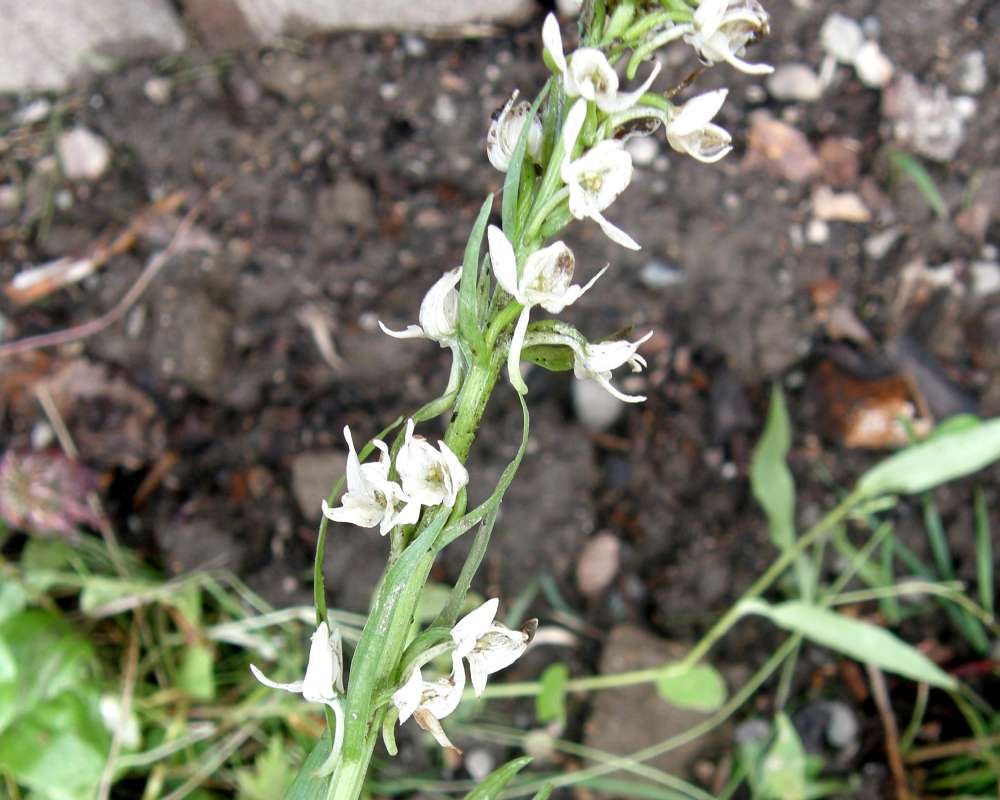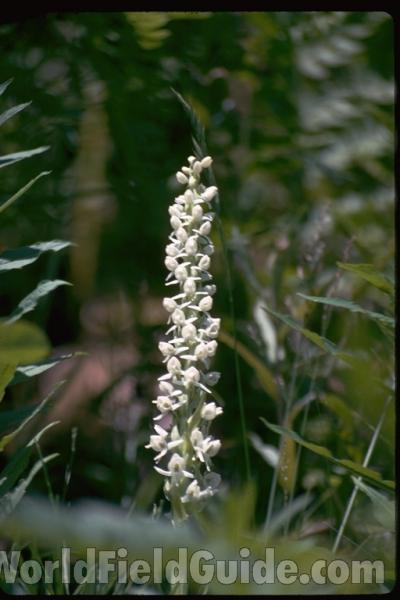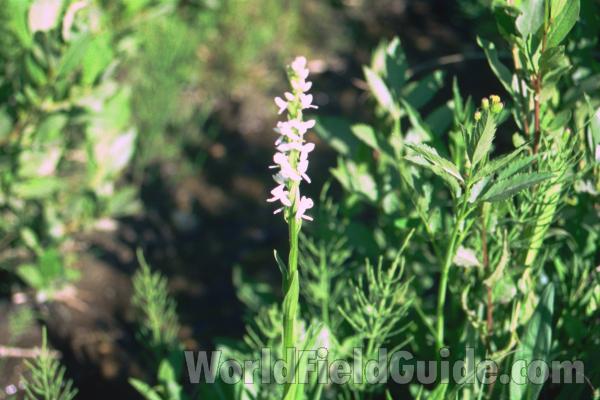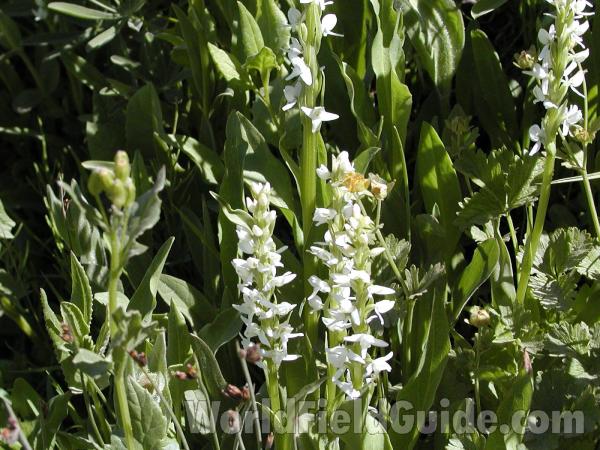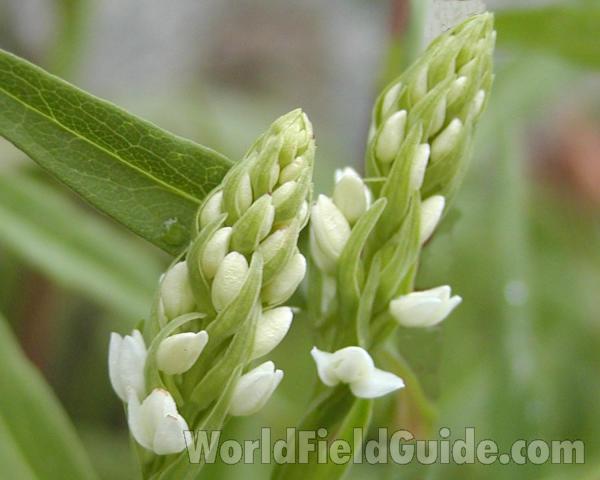SPECIES INFO
Western Bog Orchid (Habenaria dilatata leucostachys to Platanthera dilatata leucostachys) is found from Alaska south to Placer County, California and sometimes as far east as Montana and Utah.Platanthera genus is native to the temperate regions of both hemispheres. There are about 85 species of terrestrial orchids in this genus. These are erect plants usually with one to three basal leaves. There are 30 species, six natural hybrids, and 18 named subspecies now found in greater North America.
The Perularia genus has been merged into the Platanthera genus. The Gymnadeniopsis genus has been merged intot the Platanthera genus. The Limnorchis genus has been merged into the Platantherea genus. The Lysias genus has been merged into the Platanthera genus. The Lysiella genus has been merged into the Platanthera genus. The Blephariglottis genus has been merged into the Platanthera genus.
North American Orchids have been separated out as a subgroup of the Orchid family to facilitate study. Many of the plants are quite subtle in their natural environment and often hard to notice as well as identify. Many are rare. Author Kartesz notes that there are 324 species in greater North America including Puerto Rico, the Virgin Islands, Hawaii, Alaska, and Greenland. Approximately half that number (about 150) are found in Canada and the lower forty-eight states of North America.
Orchids (Family Orchidaceae) are a worldwide group of 15,000 to 30,000 species and contains some of the most exotic of North American wildflowers and some of the most exotic tropical flowers of the world. Author Griffiths estimates 17,500 species and author Pridgeon estimates from 25,000 to 30,000 species. This family also contains many very tiny species that have yet to be described in the tropics. Certain species have been the basis for some very exotic hybrid flowers.
The alternate leaves are usually sheathing. The flowers are usually with bilateral symmetry. The seeds are small like dust particles.
Microspermae is a worldwide order generally broken into two families: the Burmannia and Orchids. These two families are comprised of herbs. The flowers are usually irregular. Most species have numerous very tiny seeds.
Monocots are a large group of plants usually characterized by having leaves with parallel veins and a seed with a single shell. Most flowers are created with multiples of three. In the older botany texts, the Monocots were considered more primitive than the Dicots. However, many recent authors have placed the Monocots as an offshoot of the primitive Dicots. Here they are placed before the Dicots.
In l951 Lawrence at Cornell published a very detailed plant taxonomy for vascular plants. His taxonomy is very useful as he provided both a detailed explanation and also covered many genera. In the l990s Cronquist published a new plant taxonomy that improved the older taxonomy based on new knowledge. About the same time, Dahlgren published a different taxonomy.
Seed plants (Phylum Embryophyta) are generally grouped into one large phylum containing three major classes: the Gymnosperms, the Monocots, and the Dicots. (Some scientists separate the Gymnosperms into a separate phylum and refer to the remaining plants as flowering plants or Angiospermae.)
For North American counts of the number of species in each genus and family, the primary reference has been John T. Kartesz, author of A Synonymized Checklist of the Vascular Flora of the United States, Canada, and Greenland (1994). The geographical scope of his lists include, as part of greater North America, Hawaii, Alaska, Greenland, Puerto Rico, and the Virgin Islands.
Kartesz lists 21,757 species of vascular plants comprising the ferns, gymnosperms and flowering plants as being found in greater North America (including Alaska, Hawaii, Greenland, Puerto Rico and the Virgin Islands.
There are estimates within the scientific world that about half of the listed North American seed plants were originally native with the balance being comprised of Eurasian and tropical plants that have become established.
Plant kingdom contains a large variety of different organisms including mosses, ferns, and seed plants. Most plants manufacture their energy from sunlight and water. Identification of many species is difficult in that most individual plants have characteristics that have variables based on soil moisture, soil chemistry, and sunlight.
Because of the difficulty in learning and identifying different plant groups, specialists have emerged that study only a limited group of plants. These specialists revise the taxonomy and give us detailed descriptions and ranges of the various species. Their results are published in technical journals and written with highly specialized words that apply to a specific group.
On the other hand, there are the nature publishers. These people and companies undertake the challenging task of trying to provide easy to use pictures and descriptions to identify those species.
